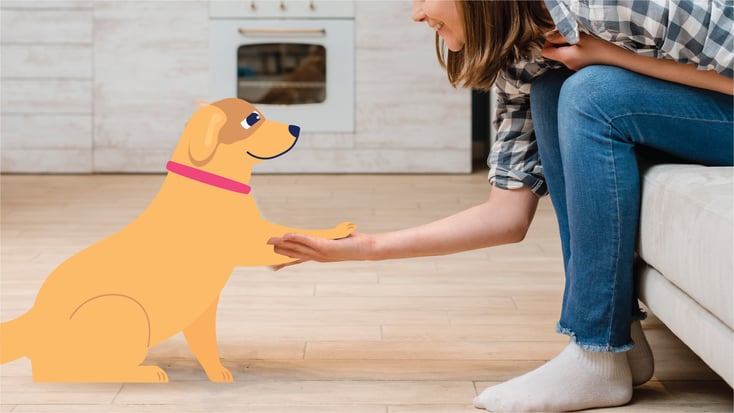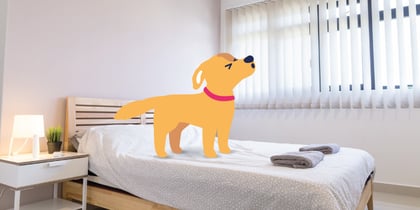End of Life Care for Dogs: Everything You Can Expect

Table of Contents
Finding out that your beloved family dog is terminally ill can be heartbreaking and overwhelming. Sometimes it is hard to be strong when you feel your world has shattered. But this is when your dog needs you most. Since we have developed a better understanding of veterinary palliative care, there are more options available as your dog reaches the end of their life. Our duty as pet parents is to give them the best possible support over the coming days, weeks, months, or beyond.
Key Takeaways:
- End-of-life care for dogs focuses on managing symptoms and keeping them comfortable.
- Hospice care provides quality time and dignified death.
- Consult with a veterinarian to ensure proper guidance and support throughout the end-of-life care process for your dog.
What is End-of-Life Care for Dogs?
Pet hospice care is a concept rather than a place. It is interchangeable with palliative care, which is an important option for pets with a terminal or severely life-limiting illness. It shifts our goals from curing the underlying disease to managing symptoms and keeping your dog as comfortable as possible.
Palliative care can provide extra quality time with your dog. It aims to support your dog's physical, mental, and nutritional needs and help you as a pet parent.
Plus, it can allow you to adjust to any big decisions ahead. Hospice care also describes the time when regular care is no longer effective. It aims to allow your pet to experience the gentle and dignified death that they deserve.
How Do I Know if My Dog Needs Hospice Care?
Usually, the decision that your dog needs hospice care will follow a terminal disease diagnosis from your veterinarian. But, it may be that your dog is very elderly, and you have noticed that they are suddenly declining. Common concerns include severe and limiting arthritis, senility (cognitive dysfunction), blindness, issues with elimination, and signs of pain.
If you feel your dog is reaching the end of their life, there is no need for them to suffer – one of our caring veterinarians will be available to help you. There is so much more to palliative care than 'waiting for the end.'
6 Things to Know About In-Home Pet Hospice Care
When deciding whether palliative care is right for your dog, you need to understand what it involves. Conditions that may be suitable for palliative care include cancer, kidney disease, and signs of old age. Hospice care at home is possible if you can address these 6 crucial areas:
1. Pain and symptom relief
Managing pain and any other symptoms affecting your dog's well-being is important. Medicines may come in many forms: injections, tablets, powders, liquids, special foods, creams, and skin patches. Your veterinarian may also recommend continuing to treat the underlying disease if this is beneficial to your dog. A veterinary consultation will provide information on all your medical options and the pros and cons of each.
2. Nutrition and hydration
It is essential your dog receives food and stays hydrated. There are lots of options to make food more palatable and accessible. Some diets will provide additional health benefits to your pet. Weight loss, lack of appetite, and poor hydration can be valuable markers for when your pet's condition is worsening. Consult with a veterinary nutritionist if your dog continues to have problems eating.
3. Urinating and grooming
Some dogs will need help getting outside to use the bathroom or may relieve themselves inside. They may need help cleaning themselves afterward. Keeping your dog clean and comfortable is a huge part of their care and may require assistance from the whole family. Gently grooming your dog can be soothing and is a lovely bonding experience for some dogs.
4. Rest and relaxation
During their final weeks, your dog will need rest. Pain can make sleeping and lying down for prolonged periods very uncomfortable. Having the correct type of bed that your pet can climb into and avoid pressure sores is crucial. Massage can be a wonderful way to spend time together and make your pet more relaxed.
5. Quality time
Sometimes, we get so caught up in nursing and medicating our pets that we forget to spend quality time together. Talking to, cuddling, stroking, and massaging your pet can benefit both of you.
6. Saying goodbye
Hospice veterinary care teams can help you decide when the time has come to let your pet go. This can be a hugely emotionally-charged decision. While some pets die peacefully at home on their own, for others, we can alleviate end-of-life suffering through in-home pet euthanasia.
How do you Take Care of a Dog at the End of Life?
With the support of an experienced veterinary team, the final weeks with your dog do not have to be an ordeal. Ensure you have the support you need from your family, friends, and colleagues to allow you to spend quality time together. There are lots of online resources that can help you through this stressful time.
Think about the things you love to do together and put aside time to do them. Cuddle on the couch, sit outside or take them for a walk in a dog stroller. You will remember those last few weeks when you say goodbye to your faithful companion, so try to make them relaxed and special for you both.
Cherishing the Bond With Your Pet Until Very End
BetterVet doctors offer in-home euthanasia, ensuring a peaceful and familiar setting for your pet’s final moments.
Frequently Asked Questions
How do I make the decision to say goodbye?
This is often the most challenging part. The decision to euthanize is a very personal one. It is important to make the best decision for your pet before discomfort turns into suffering. Quality-of-life scoring can also be a crucial tool in enabling you to objectively judge your pet's progress.
At BetterVet, we have an incredible team of veterinarians who can talk you through your pet’s end-of-life care and how to make this difficult decision. When it’s time, schedule an appointment with one of our compassionate veterinarians.
What happens when it's time to say goodbye?
This is an emotional time for pet parents, and you will understandably be worried and upset. But, if you have a say in planning for your pet’s euthanasia, it can be a very peaceful experience. Knowing that your pet can cross the rainbow bridge in the comfort of home can be very reassuring. Always discuss options with your vet before the time comes as it can be difficult to think clearly if your dog is suddenly unwell.
Plans may have to change, but having a clear idea of the process and the options open to you can be comforting at a very challenging time. When you are ready to have a conversation about in-home pet euthanasia, you can schedule a consultation with one of our BetterVet veterinarians.





